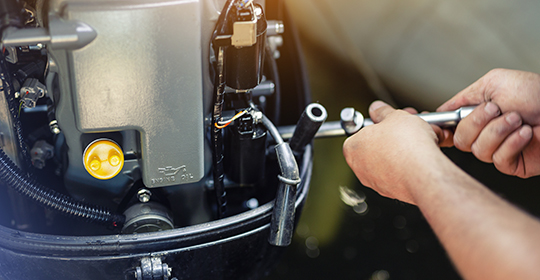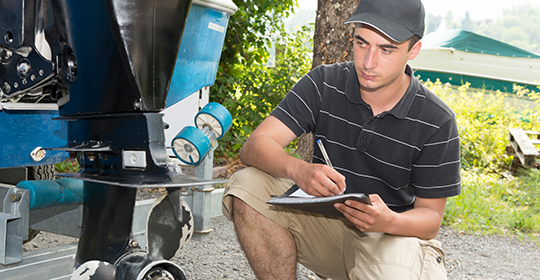Now’s the Time for Your Boat Safety Equipment Inspection
By Ken Schultz
Feb 09, 2024
How to accomplish a thorough boat safety equipment inspection, and also have a certified examiner conduct one, at the beginning of the boating season
Whenever you haven’t used your boat for a long time, and especially after a winter layup, you should conduct a boat safety equipment inspection. This will be pretty simple if you just use a kayak, canoe, or rowboat, but more involved if you have a large vessel. Safety equipment requirements vary depending on the type of watercraft. A kayak, for example, is not required to have a fire extinguisher or a throwable flotation aid.
Get a Vessel Safety Check

One option is to have a boating equipment safety inspection performed by the U.S. Coast Guard Auxiliary (USCGA). Their free Vessel Safety Check (VSC) is conducted by a certified vessel examiner who will come to you if the boat is in a moored location, or you can bring a trailerable boat to the examiner at a mutually convenient time.
The USCGA is a volunteer organization whose mission, in part, is to promote and improve recreational boating safety. Among the materials they offer are pre-departure, equipment, and vessel systems checklists for boaters.
In a VSC their examiner will go through a list of items and, if your boat passes, it will be issued a 12-month-valid inspection sticker to be displayed on your boat, which means that if you are stopped by a state patrol agent or by a U. S. Coast Guard officer during that period, they’ll know that you’ve passed a certified boat safety equipment inspection and will not conduct one themselves. I’ve been stopped several times for inspection, and can attest that having the sticker saves plenty of on-water time, which is especially helpful if you’re on a hot fishing bite when this occurs.
There’s no consequence if your vessel doesn’t pass, and you’ll be advised as to how to rectify whatever issue is identified. Signaling flares and fire extinguishers that are past their use-by-date are probably the most common issues.
Do Your Own Inspection

You can do a thorough boat safety equipment inspection yourself periodically but certainly at the start of every boating season. In fact, you probably want to do this if you’re going to have the aforementioned Vessel Safety Check, to assure that you pass. Make sure you accomplish all of the following checks as appropriate for your boat.
• PFDs (personal flotation devices or “life jackets”) - available, appropriate, and in good condition for each person onboard
• Throwable flotation aid - accessible and in good condition
• Fire extinguisher - must be marine type, USCG approved, in good condition, accessible, and with the indicator needle in the green zone
• Visual distress signals - usually flares, must have current expiration date
• Horn - or bell in larger vessels, must be working
• Navigation lights - both fore and aft must be working
• Engine cutoff switch - must turn the engine off immediately when the lanyard is pulled
• First aid kit - restock as necessary, check expiration of included items, make it easily accessible
• Navigation and communication equipment - check operation of GPS and marine radio equipment
• Dock lines, anchors, anchor rope - not actual safety equipment but often necessary to have; check condition









